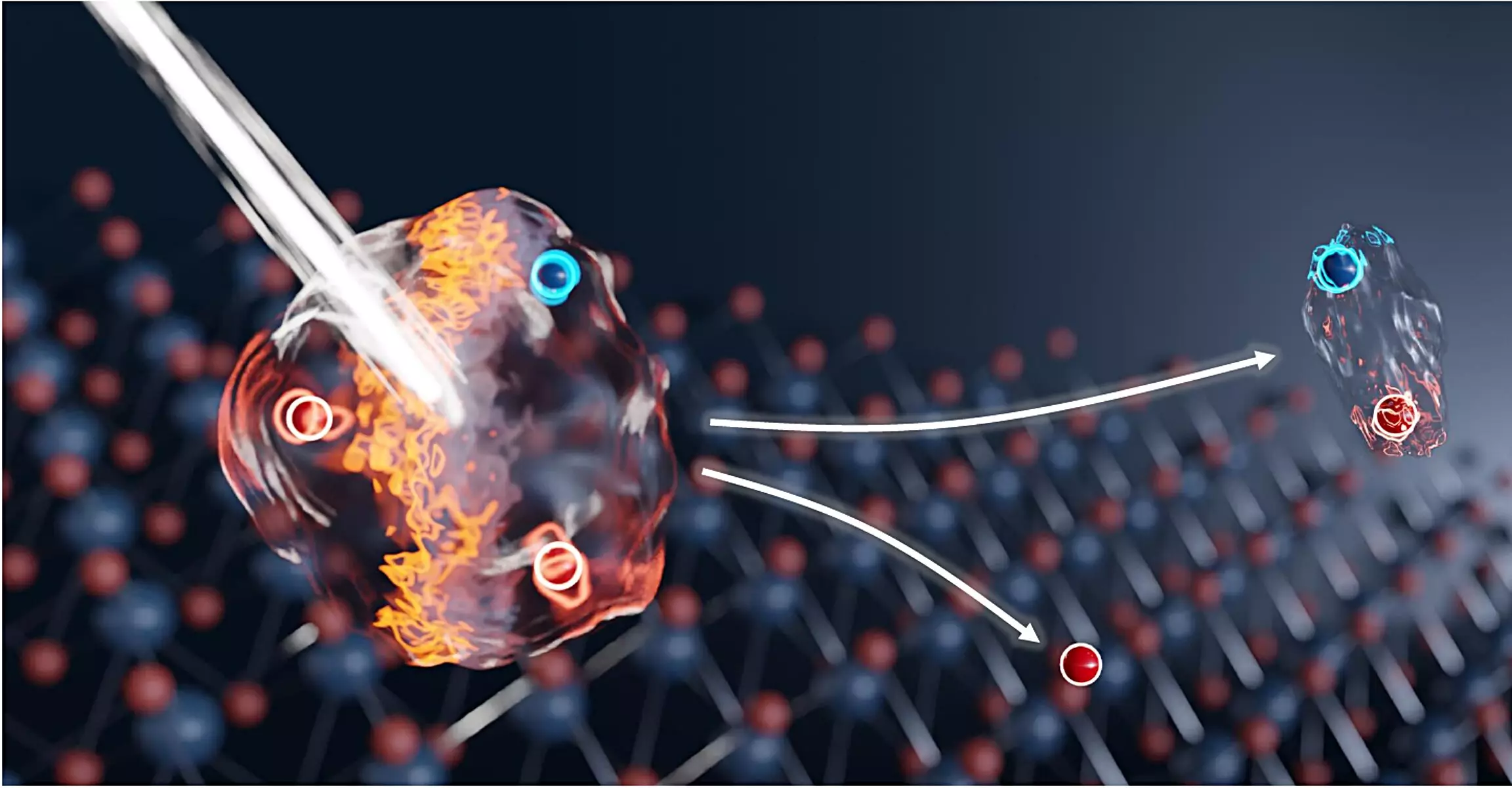Recent research led by an international consortium with TU Dresden at the forefront has provided significant insights into the realm of two-dimensional materials, which consist of merely a few atomic layers. These ultra-thin structures hold the potential to revolutionize electronics and quantum technologies. The team achieved an extraordinary feat by inducing a rapid switching process between electrically neutral and charged luminescent particles in a two-dimensional semiconductor, specifically molybdenum diselenide (MoSe₂). Published in the esteemed journal Nature Photonics, this research may lay the groundwork for innovative applications in optical data processing and flexible sensor technologies.
At the core of this research lies the behavior of excitons—electron-hole pairs formed when an electron is energetically excited within the semiconductor. When an electron gets excited, it leaves behind a positively charged ‘hole,’ leading to the formation of excitons through the attraction of the two entities. When another electron encircles this exciton, a trion—a three-particle complex—is created. This trion boasts a unique combination of electrical charge and significant light emission, making it an intriguing subject for electronic and optical manipulation.
The previous limitations in studies focusing on switching between excitons and trions centered around slow operational speeds, which hampered practical applications. However, the groundbreaking work by Dr. Stephan Winnerl and Prof. Alexey Chernikov has shattered this barrier, accelerating the transition between these two states significantly.
The experiments harnessed a state-of-the-art free-electron laser facility at the Helmholtz-Zentrum Dresden-Rossendorf (HZDR), which generated intense terahertz pulses. By shining these pulses on the bare atomic layer of MoSe₂ cooled to cryogenic temperatures, the researchers started the process by generating excitons. The subsequent capture of electrons converted many of these excitons into trions.
What truly sets this experiment apart is the unique timing and frequency of the terahertz pulses used. The researchers finely tuned the pulse frequency to strategically disrupt the weak bond between the exciton and its electron, allowing them to revert back with unprecedented speed. This swift conversion occurs in just a few picoseconds—a stark contrast to prior methods, which operated nearly a thousand times slower.
The implications of this research extend far beyond mere academic curiosity. The newfound ability to switch at incredibly high speeds presents exciting prospects for various technological fields. For example, the development of new types of modulators with rapid switching capabilities could enhance communication technologies. Integration with ultra-thin semiconductor materials could lead to ultra-compact devices capable of electronically manipulating optically encoded information with unmatched efficiency.
Additionally, researchers envision potential applications in terahertz detection and imaging. By adapting the established processes demonstrated in these atomically thin semiconductors, they could pave the way for terahertz cameras equipped with numerous pixels, capable of operating effectively across a broad spectrum of frequencies. Even relatively low-intensity sources might suffice to trigger the switching process, making these systems versatile and practical.
Experts anticipate that these cutting-edge findings will inspire further studies, extending the methods shown in this research to encompass a wider variety of materials and complex electronic states. The prospect of engaging with unusual quantum states resulting from strong particle interactions marks a thrilling development in condensed matter physics. As scientists work toward practical applications, the marriage of optical and electronic functionalities seen in these rapidly switching excitons and trions presents a vital leap toward next-generation semiconductor technologies.
The collaboration of researchers from various institutions has not only accelerated the understanding of exciton-trion dynamics but also illuminated a path toward advanced applications that could fundamentally reshape technology as we know it. Positive strides in this area indicate that the future is bright for optical electronics, promising an era where speed and efficiency go hand in hand within ultra-thin, two-dimensional materials.


Leave a Reply